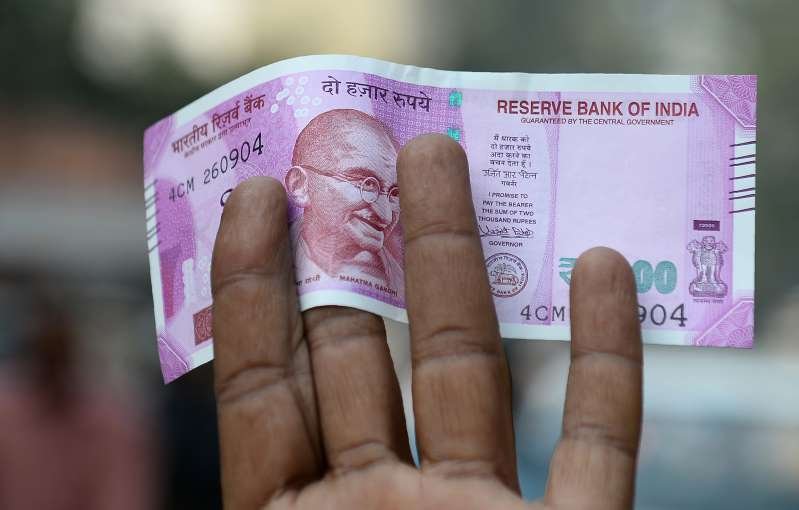Money
Why banks keep offering pre-approved loans to you

Have you recently received a call from a bank representative offering you a pre-approved personal loan or credit card? Chances are you have, and not one, but many such calls. While a lot of you may have refused to buy into the offer or blocked the numbers from which such calls come, such calls are one of the marketing gimmicks banks and other financial services marketplaces use to push credit to retail customers. And at least some of the effort is paying off.
There has been a 28.60% growth in credit card accounts between December 2017 and December 2018, according to data from credit bureau TransUnion Cibil Ltd. Similarly, personal loan accounts have also gone up by 29.30% in the same period. On the other hand, growth in home and auto loan accounts is only slightly higher than 10%, while loan against property accounts have also seen a growth of over 30% during the period.
“There are two types of borrowing by consumers. One is an asset-led borrowing like borrowing to buy or build a house. The other is consumption-led, like a loan for a holiday or a marriage. What we have seen in the past couple of years is a pick up in consumption-led loan demand,” said Ambuj Chandna, head, consumer assets, Kotak Mahindra Bank.
In fact, the share of retail loans in the overall outstanding loan books of banks has also been on a steady rise. Retail loans made about 27% of the total outstanding loans in April 2007, which gradually declined to 18% in April 2013, but reached 26% in January this year, according to data from the Reserve Bank of India or RBI.
So why are banks pushing retail loans and what are the factors contributing to this trend?
Retail attraction
As a retail borrower, you are less likely to default on a loan repayment compared to other borrowers.
Increasing non-performing assets in corporate and MSME loan segments over the past few years have pushed banks to seek credit growth in the retail loan segment, said Gaurav Aggarwal, head of unsecured loans at Paisabazaar.com, a financial services aggregator. “As of September 2018, the Gross NPA (GNPA) ratio in industries and services segments were 20.9% and 6%, respectively, whereas the GNPA ratio of retail lending segment was just 2.1%,” he said.
Data from RBI also shows that fresh slippages in the recent past have been higher in agriculture, industries and services segments, compared to retail.
Anil Gupta, sector head, financial sector ratings, Icra Ltd, said asset quality has been decent for banks even in the credit card segment, which is the highest-risk segment in retail loans. The NPA level in credit cards category is less than 2%, he said.
Some bankers don’t agree that the focus on retail is because it is less risky or gives better returns. “The change is not because retail is more attractive from a return perspective. We are equally focused on other segments like agri or services or corporate. But the momentum currently is in retail and hence it is growing faster. The ecosystem is still evolving and I see it continuing for some time,” Chandna said.
Data analytics
But how do banks figure out which product to offer to which customer? Your transaction patterns with a bank gives a lot of insights. For instance, if you are spending repeatedly to buy movie tickets using the Netbanking facility, the bank is likely to offer you a co-branded credit card that has some related benefits. In such a case, you are more likely to buy that product than other customers.
The combination of better risk assessment, ability to analyse behaviour and target specific products is leading to an increase in the number of personal loans and credit cards.
The improved capabilities of banks to analyze consumer behaviour from their own database as well as from data from credit information bureaus has significantly improved their ability to assess the risk in retail loans for specific customers. “The stabilising of credit bureaus in the last 10 years and their ability to give us good quality information on consumers has helped the industry in having a better risk appetite compared to the situation five-to-six years back,” Chandna said.
Moreover, he said, significant investments have gone into enhancing data analytics capabilities of the banks. “We have ourselves become data rich and are able to leverage the customer’s behaviour with us, combining it with their behaviour data at the bureau and the quality of understanding of the customer has improved,” he said.
Ease of taking loans
Apart from the analytics and risk assessment, the availability of credit has also improved rapidly in the past few years. “The increased adoption of digital channels and swifter loan disbursal processes has also increased access to retail loan products, boosting the demand side. All these have contributed to the increased share of retail lending,” Aggarwal said.
Gupta said that retail borrowers have been under-served in terms of credit availability in the past. “It was very difficult to take a home loan or a car loan about 15-20 years ago. Now it has become very easy. Ease of taking loans and converting them into EMIs is also driving the consumption of retail loans. This is evident from the fact that even in retail loans, the segments growing at an accelerated pace are credit cards and personal loans. Other retail segments like home or car loans are growing at a normal pace,” he said.
For instance, Chandna said, taking an unsecured personal loan for you as a customer is now just a tap on your mobile banking app and the money comes into your account. “This is dramatically different from the past. Just three-four years ago, taking a personal loan was a 15-day exercise,” he said.
What should you do?
As a consumer, easier availability of credit is indeed useful to those in need, but avoid taking unnecessary loans or multiple credit cards you may not need. A default on one loan or a credit card could hit your credit profile and hamper your chances of getting a good deal on a loan when you actually need one.
Borrow responsibly, and only when you need to. If you do not need a loan or do not have the repayment capacity, disconnect all such calls.
-

 Health4 days ago
Health4 days agoSoaked vs. Raw Almonds: The Healthier Choice for Weight Loss & Wellness
-

 Health4 days ago
Health4 days agoMorning Walk or Evening Run: Which Is Better for Heart Health?
-

 Money4 days ago
Money4 days agoPost Office PPF Calculator: How Much Will You Get by Investing Rs 1,000, 5,000, and 10,000 Monthly for 15 Years?
-

 Cryptocurrency3 days ago
Cryptocurrency3 days agoTop AI Agent Coins to Watch in 2025: The Future of AI-Powered Cryptocurrencies
-

 Money3 days ago
Money3 days agoDividend Yield Funds: Why Should You Invest in Them? Key Advantages Explained
-

 Health2 days ago
Health2 days ago5 Health Benefits of Drinking Soaked Jeera Water
-

 Technology2 days ago
Technology2 days ago10 Best AI Tools for Content Creation in 2024
-

 Technology1 day ago
Technology1 day ago10 Best AI Tools for Video Editing in 2025: Transform Your Editing Workflow with AI








